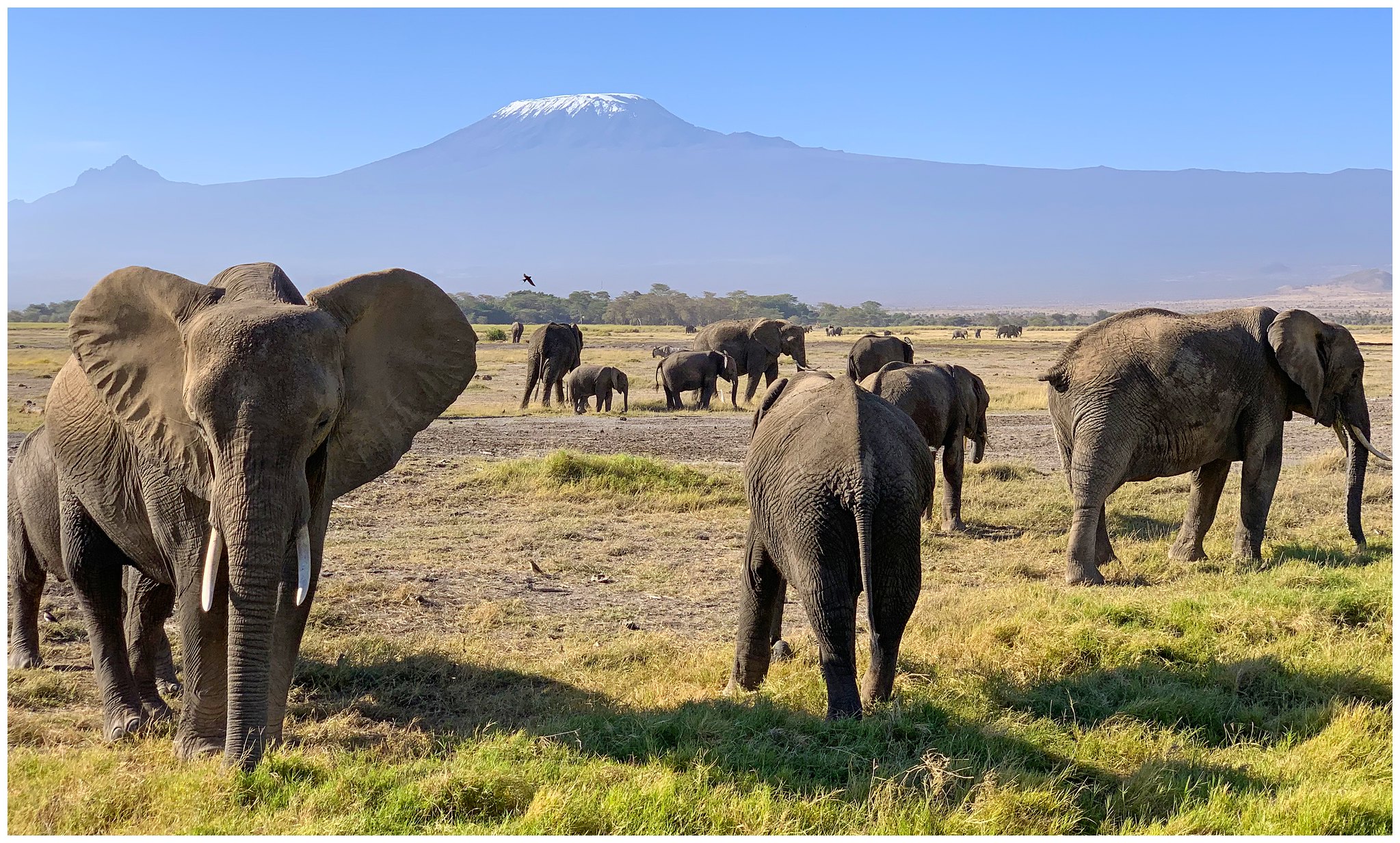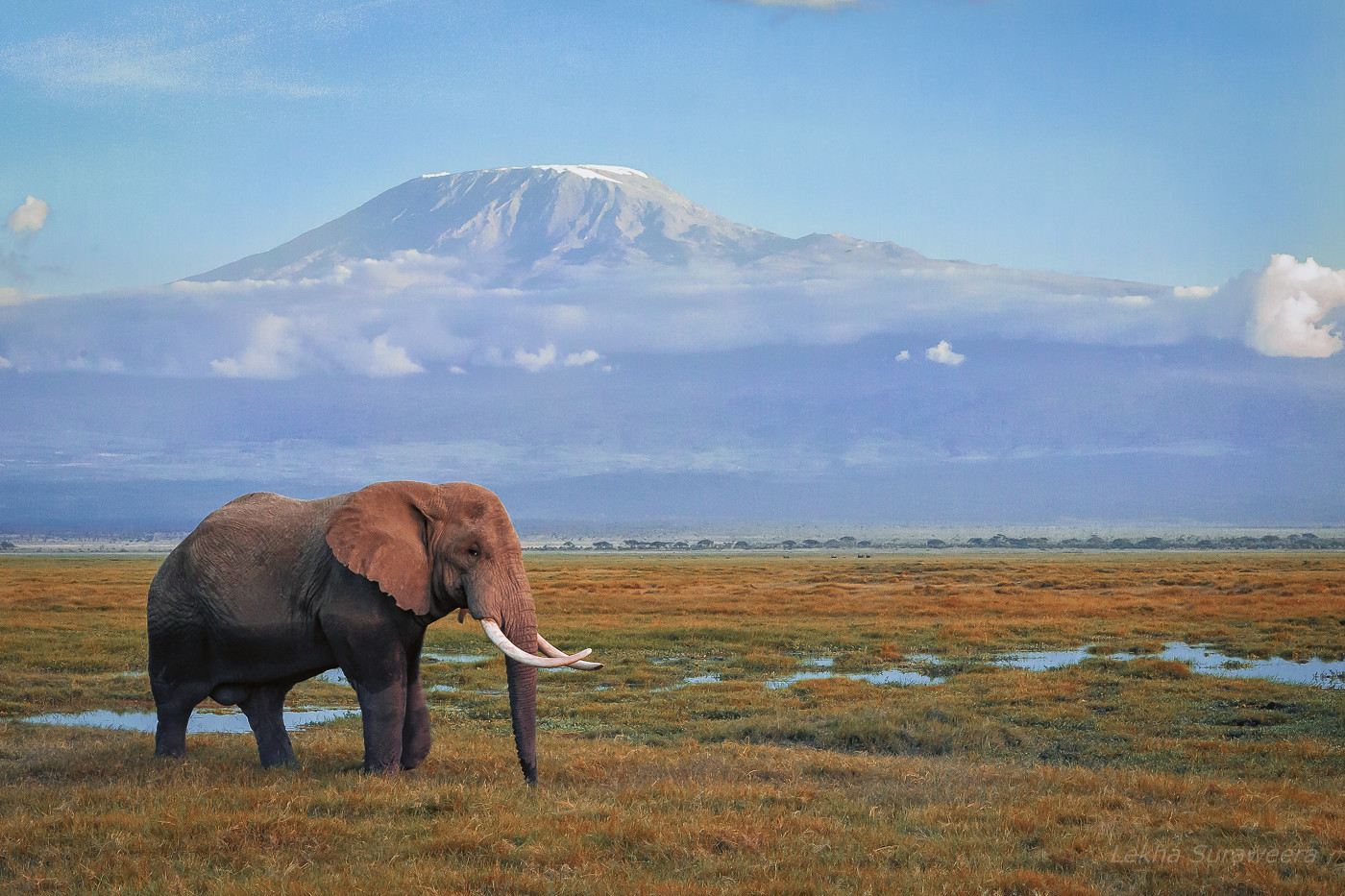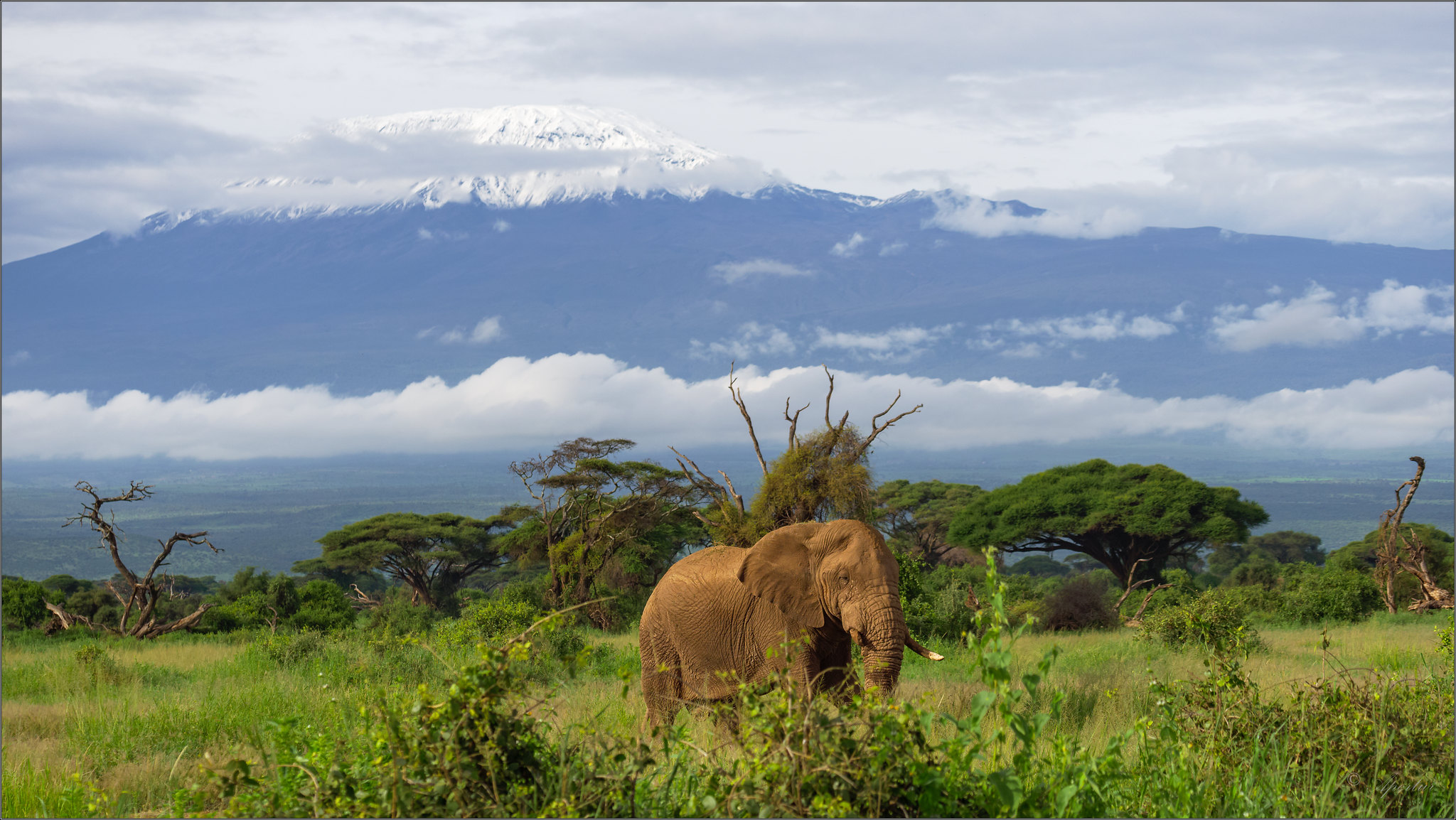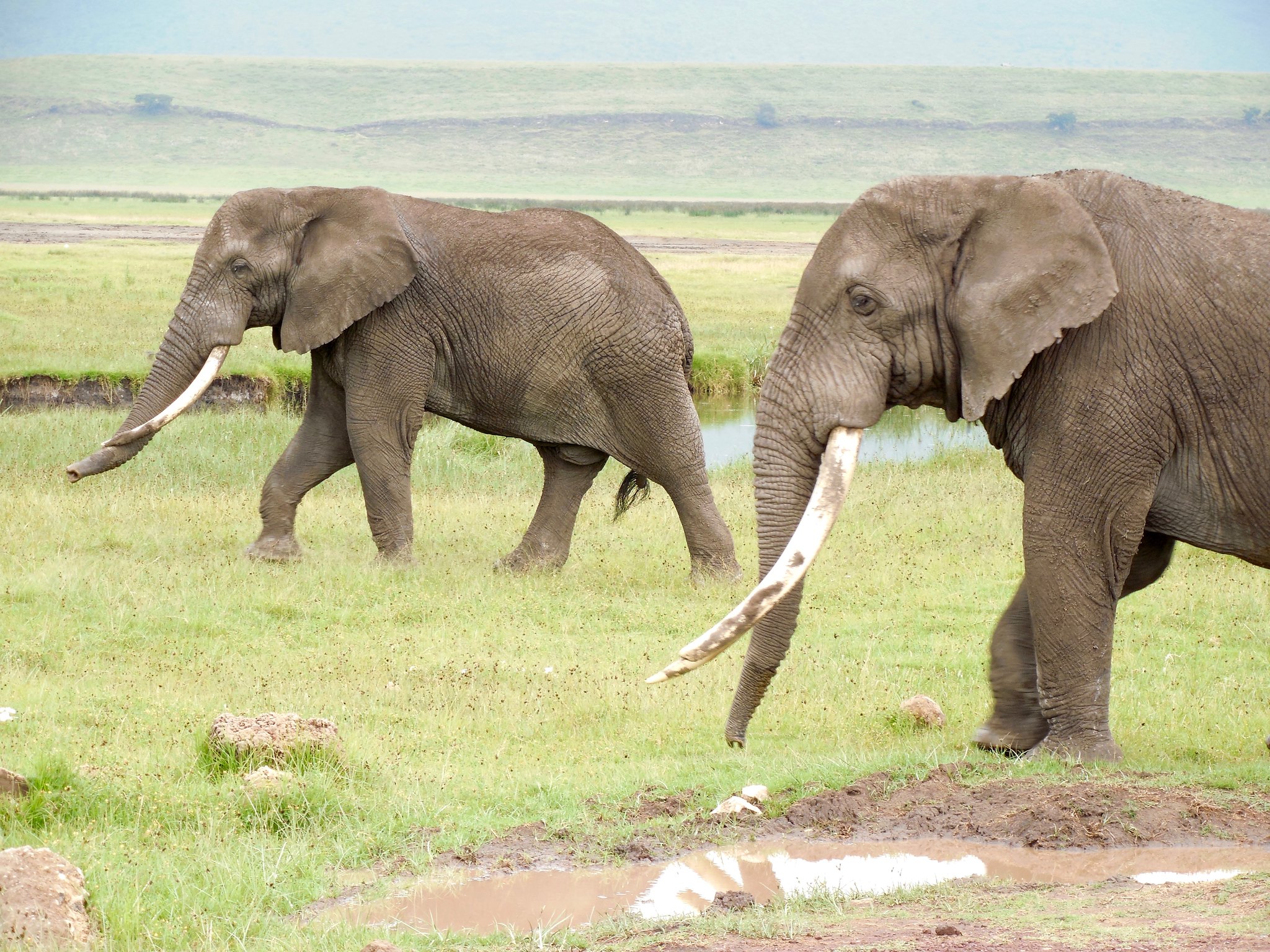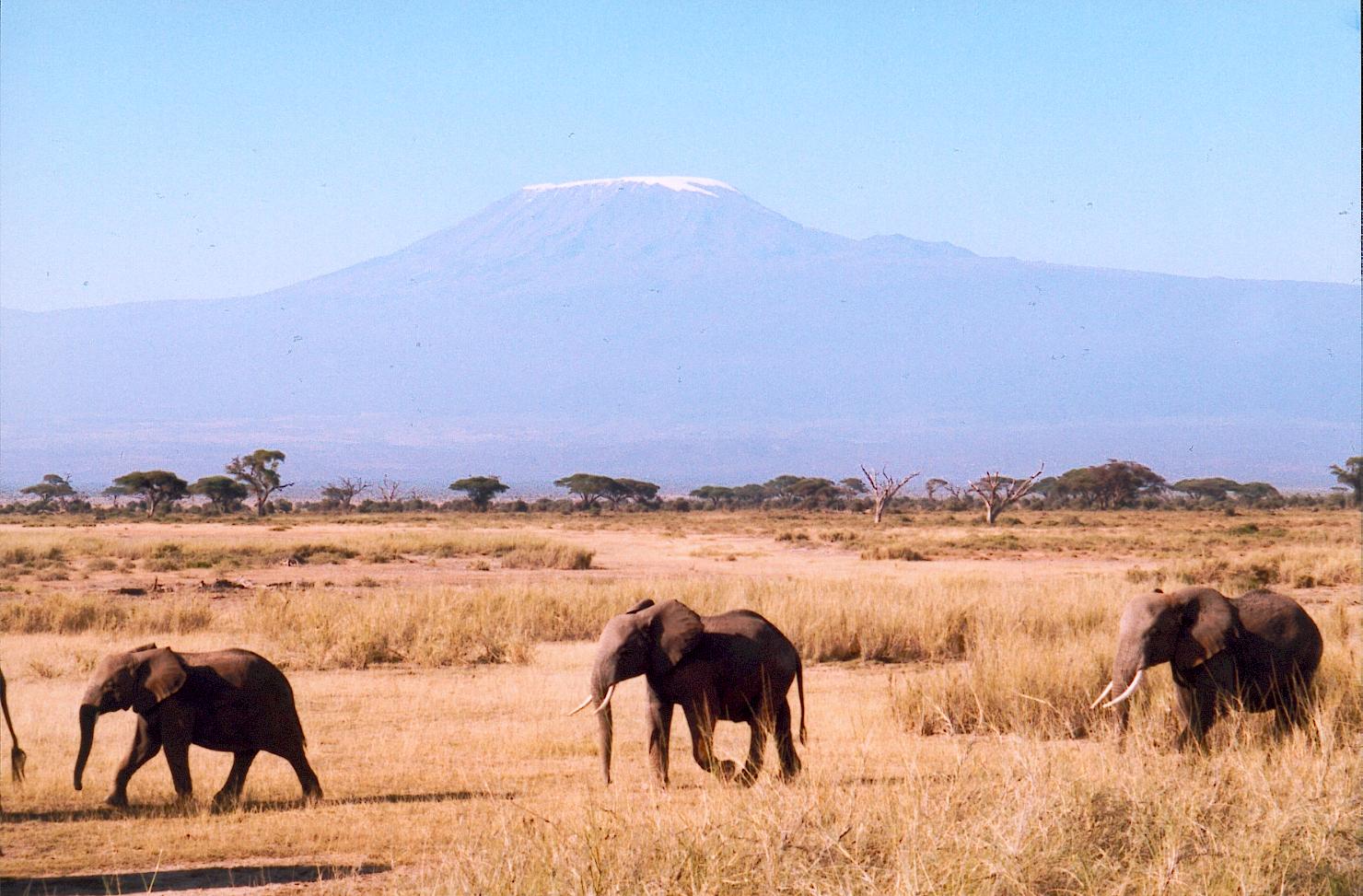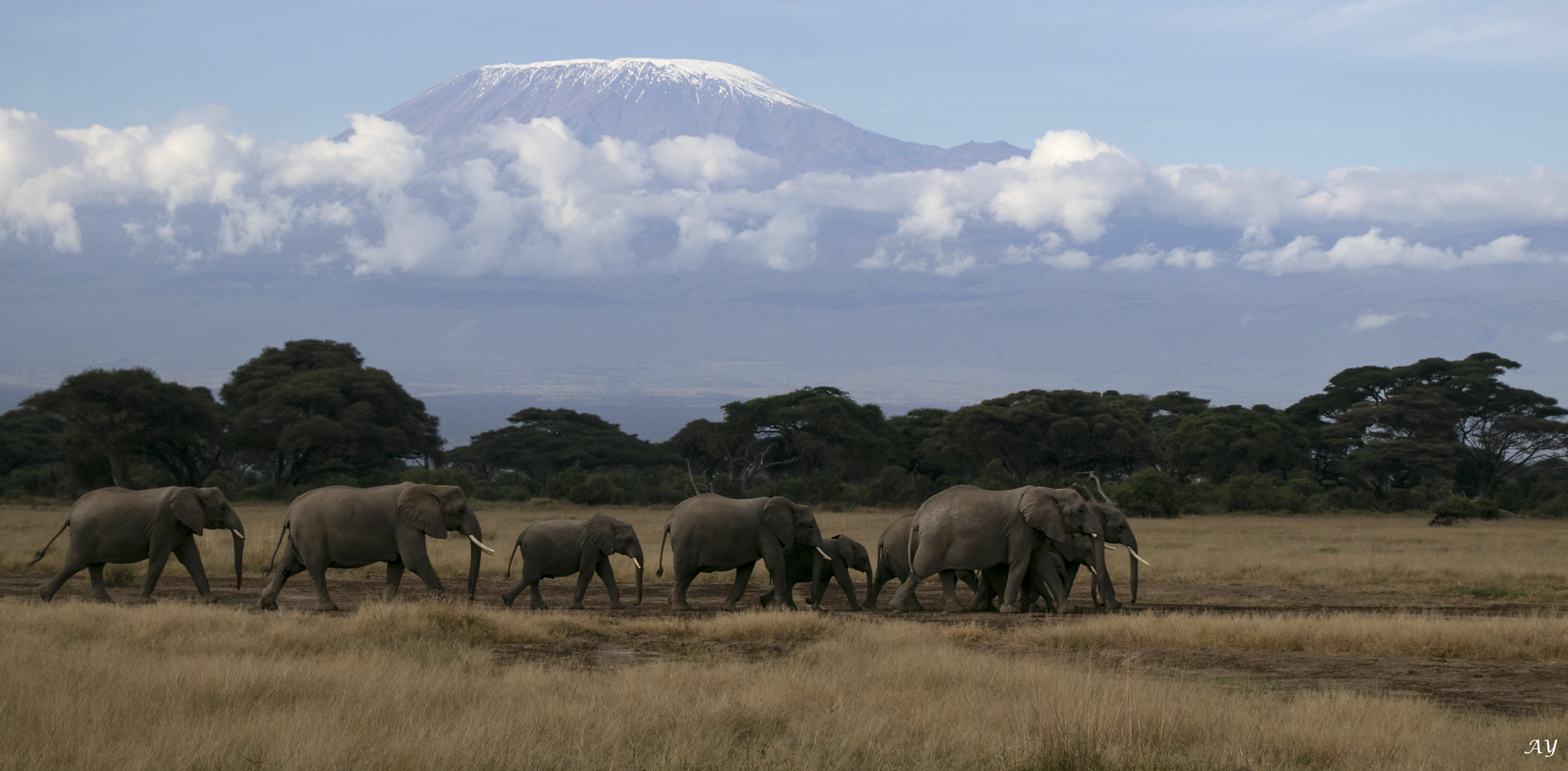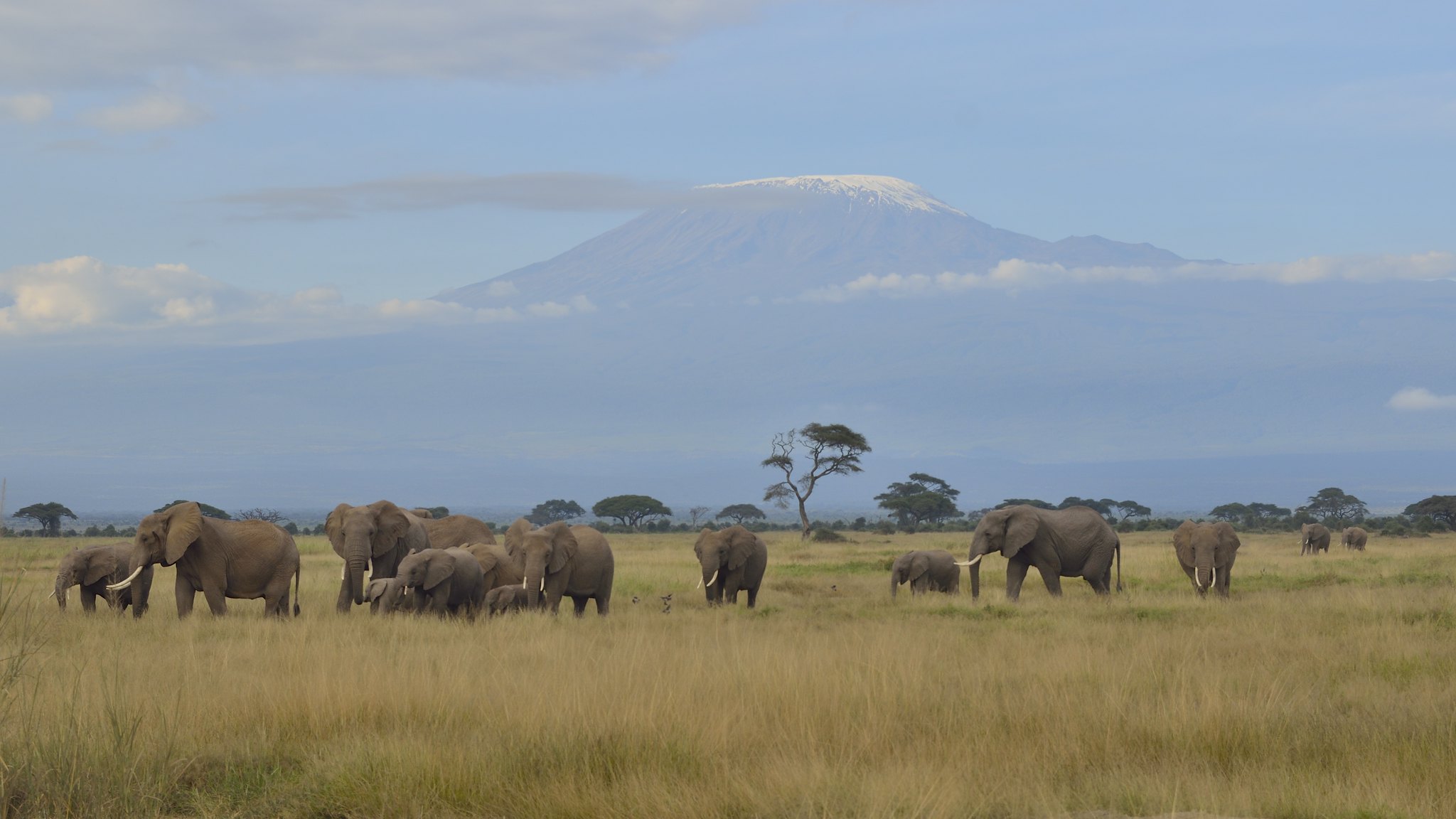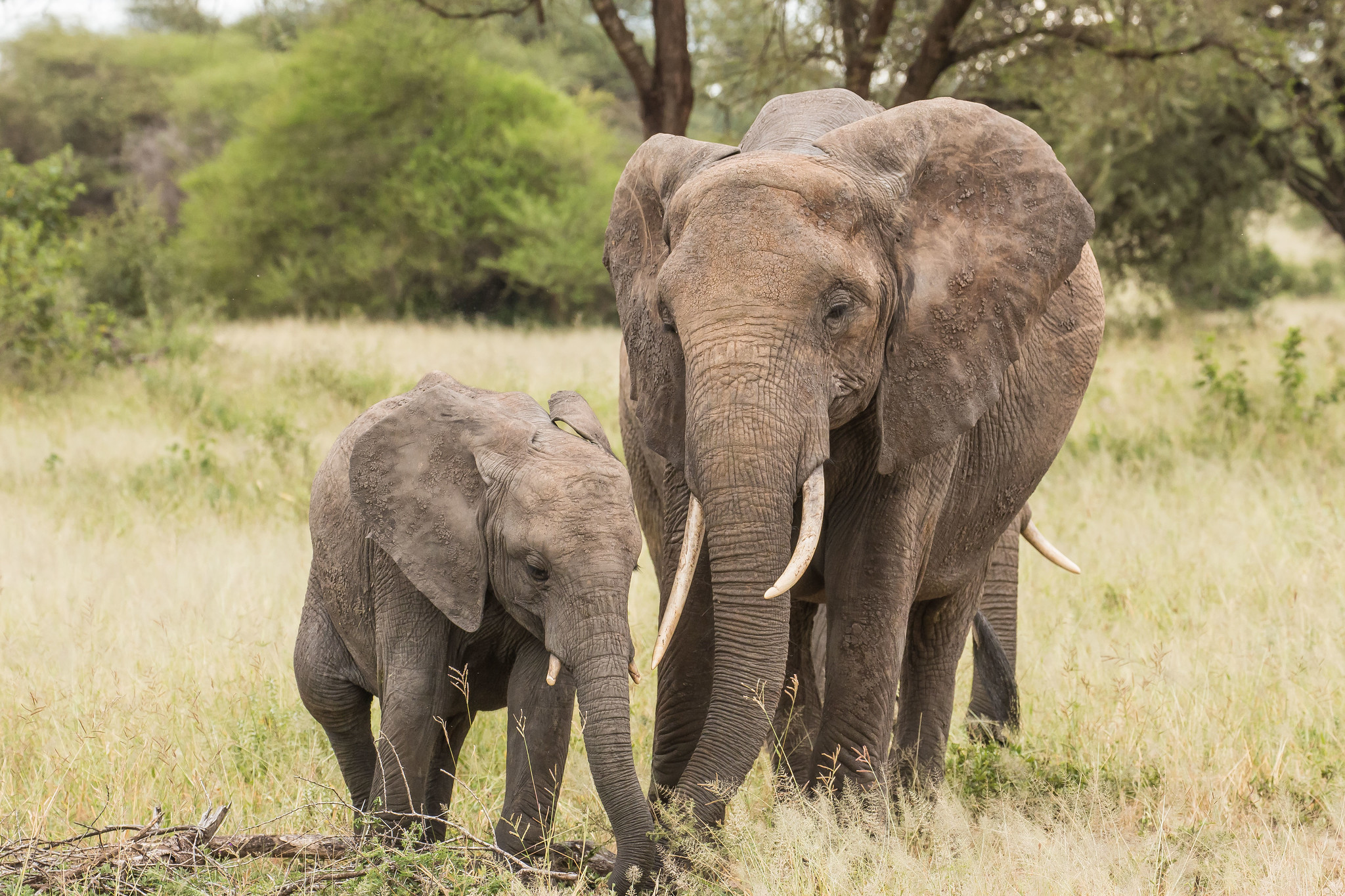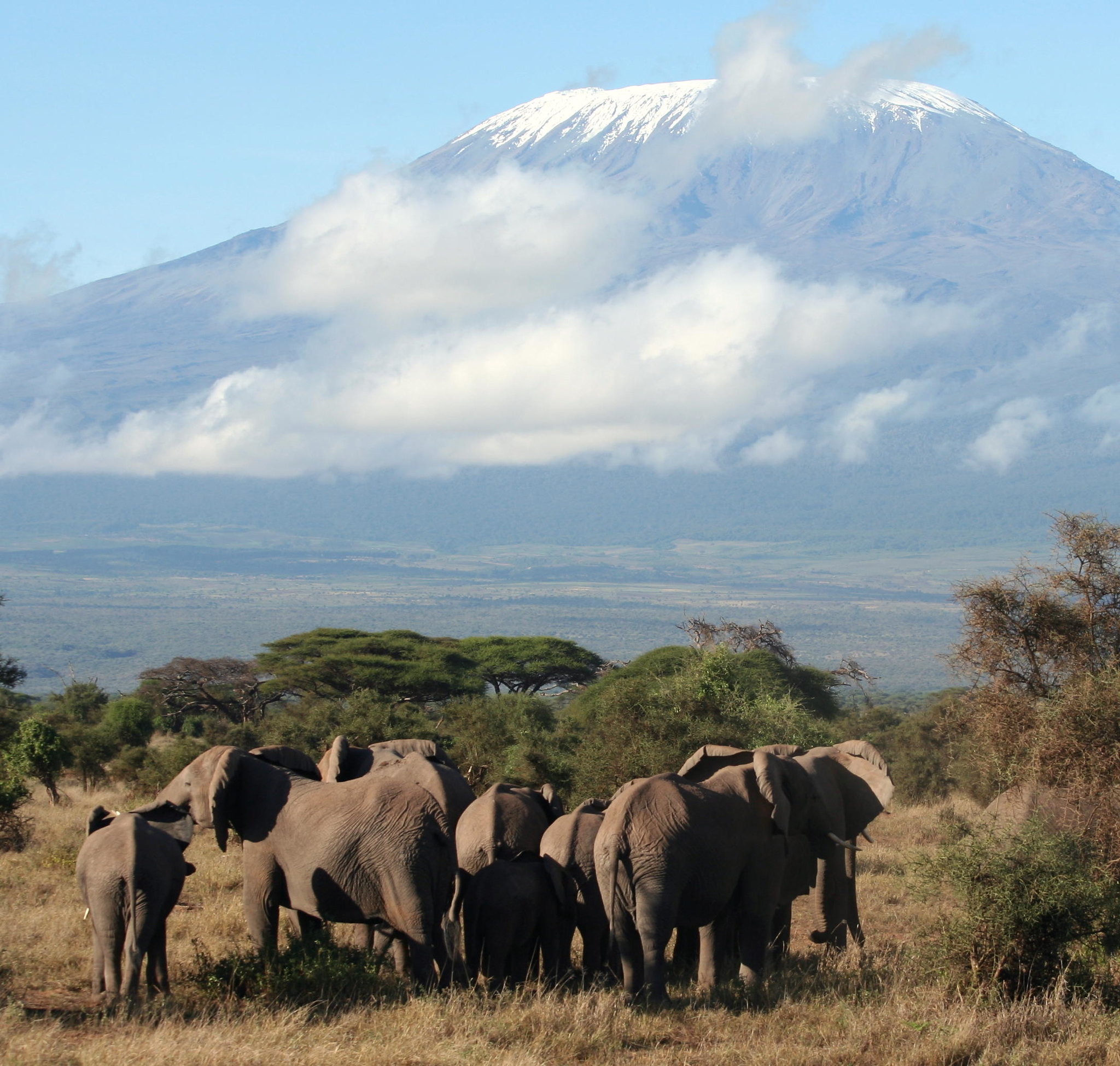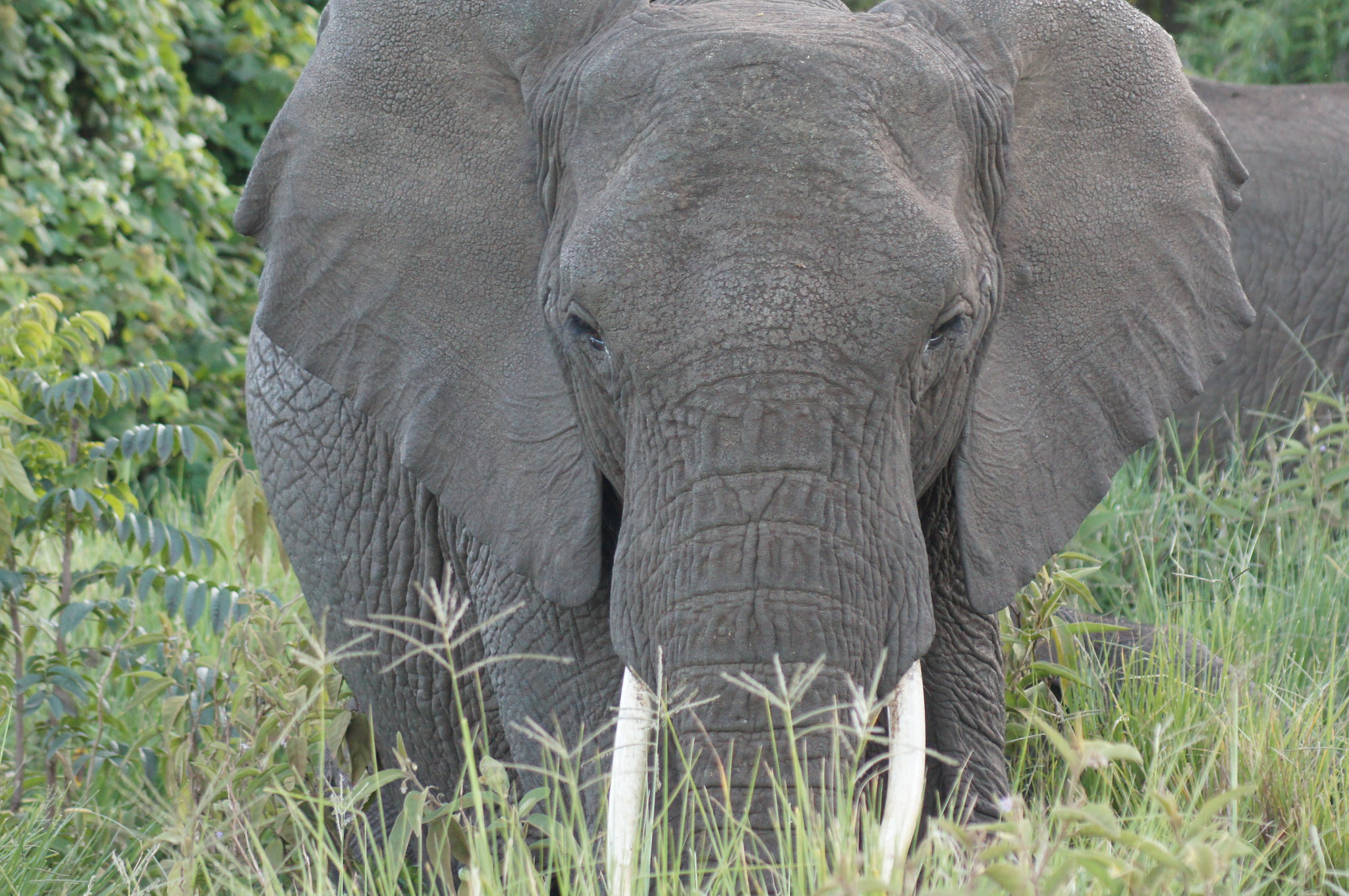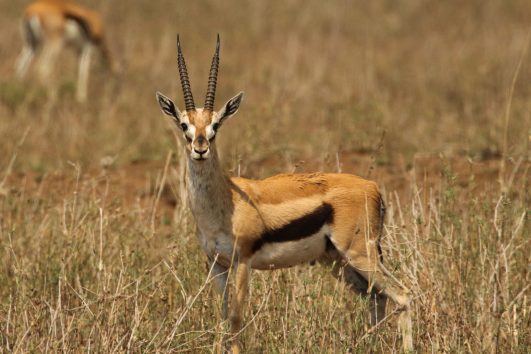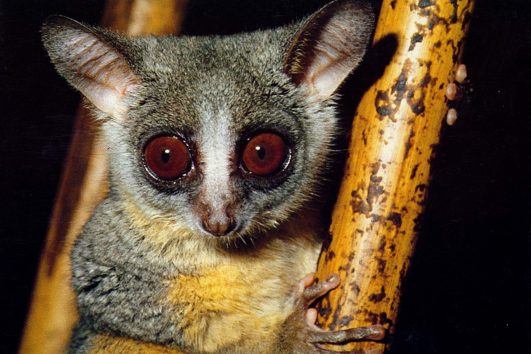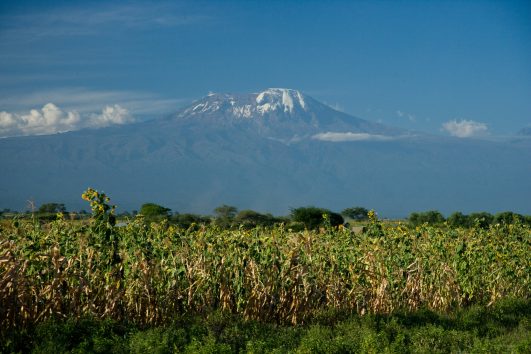The African elephant (Loxodonta africana) is the largest land mammal on Earth, known for its impressive size, intelligence, and social behavior. They are divided into two species: the African bush elephant (Loxodonta africana) and the smaller African forest elephant (Loxodonta cyclotis).
Amboseli Park is renowned for its elephant herds, where groups as large as 100 elephants can be seen quenching their thirst at swampy springs. These springs are fed by an underground water source originating from the ice cap of Kilimanjaro. Additionally, the park is home to some bull elephants with remarkably long and striking tusks.
Elephants of Amboseli National Park
Amboseli National Park is home to over 1,600 elephants, providing them with ample space to roam and feed. The park’s diverse ecosystem, including cool wetlands and open savannahs, supports a thriving elephant population. Elephants often spend their time in the wetlands during the dry season and daylight, while they prefer to graze and bask in the sun in the cooler parts of the day on the grasslands. Other areas like woodlands and the lakeshore basin also host various wildlife, contributing to the rich biodiversity that sustains the park’s large animal population.
Amboseli holds records for the longest tusks and the largest elephants, making it a significant site for elephant research globally. Before the elephant population surged, there were notable conflicts between humans and wildlife. However, efforts by the Kenya Wildlife Services and the Kenyan government have reduced poaching and human-wildlife conflicts.
The Amboseli Elephant Research Project, initiated by the Amboseli Trust for Elephants in 1972, has played a crucial role in the conservation and study of these elephants, aiming to protect and improve the lives of African elephants.
Tarangire National Park: “The largest concentration of elephants in the world”.
Tarangire National Park in northern Tanzania is renowned for hosting one of the largest populations of African elephants, with about 2,500 individuals, a number that’s growing by around 6% annually. It’s common to witness herds of up to a hundred elephants at once, and within a few hours, you might encounter as many as 500. The park’s dry season sees a concentration of wildlife that rivals even the famous Serengeti, showcasing a vast array of savannah species.
The Elephants of Kilimanjaro
Elephants have roamed the vicinity of Kilimanjaro for millennia, and despite their numbers decreasing, signs of their presence still linger in the forests. But could an elephant ascend to the mountain’s icy summit?
There’s intriguing evidence to support this notion. David Breashears, a renowned photographer and filmmaker, recounts in his introduction to “Kilimanjaro: To The Roof Of Africa” how he was told of elephant remains at high altitudes. His curiosity led him to discover an elephant skeleton at the remarkable elevation of 15,000 feet on Kilimanjaro.
Classification:
- Kingdom: Animalia
- Phylum: Chordata
- Class: Mammalia
- Order: Proboscidea
- Family: Elephantidae
- Genus: Loxodonta
- Species:
- Loxodonta africana (African bush elephant)
- Loxodonta cyclotis (African forest elephant)
Physical Appearance:
- Size: African bush elephants can stand up to 3-4 meters (10-13 feet) at the shoulder and weigh between 5,000 to 7,000 kg (11,000 to 15,400 lbs). Males are generally larger than females.
- Ears: Their large ears, which can be up to 2 meters (6.6 feet) wide, are used for heat dissipation. The African bush elephant’s ears are larger than those of the forest elephant.
- Trunk: The trunk is an extension of the upper lip and nose, capable of grasping, smelling, and vocalizing. It has over 40,000 muscles.
- Tusks: Both male and female African elephants have tusks, which are elongated upper incisor teeth used for feeding, defence, and digging.
- Skin: Their skin is gray and wrinkled, which helps in heat dissipation. They have sparse hair, which is more noticeable in younger elephants.
Adaptations:
- Trunk: This versatile appendage allows them to drink, eat, dust themselves, and communicate. It’s sensitive enough to pick up small objects.
- Tusks: Used for foraging, digging for water, minerals, or roots, and as weapons in defence or combat.
- Ears: The large ears are filled with blood vessels, acting like radiators to cool the elephant’s blood.
- Social Structure: Elephants live in matriarchal family groups, with strong social bonds, which provide safety in numbers and help in raising calves.
- Memory and Intelligence: Elephants have excellent memory and complex social behaviours, indicating high cognitive abilities.
Habitat:
- African Bush Elephant: Found in savannas, grasslands, and semi-deserts across sub-Saharan Africa. They require vast areas to roam, with access to water and vegetation.
- African Forest Elephant: Inhabit the dense rainforests of West and Central Africa. They are adapted to move through thick vegetation, often following game trails or creating their own paths.
Behavior:
- Diet: They are herbivores, consuming up to 300 kg (660 lbs) of food daily, including leaves, bark, fruits, and grasses.
- Communication: Elephants use a variety of vocalizations, including infrasound (low-frequency sounds below the range of human hearing) for long-distance communication.
- Reproduction: Gestation lasts about 22 months, the longest of any land animal. Calves are born weighing around 100 kg (220 lbs) and are cared for by the entire family group.
Conservation Status:
- African Bush Elephant: Listed as Vulnerable by the IUCN due to habitat loss, human-elephant conflict, and poaching for ivory.
- African Forest Elephant: Critically Endangered, facing severe threats from poaching for ivory and habitat destruction due to logging and agriculture.
African elephants play a crucial role in their ecosystems, acting as ecosystem engineers by creating clearings in forests, spreading seeds through their dung, and shaping landscapes through their feeding habits. Their conservation is vital not only for their survival but for the health of African ecosystems
Additional information
| Habitat | Kilimanjaro National Park, Mount Meru, Mount Kenya, Serengeti |
|---|

